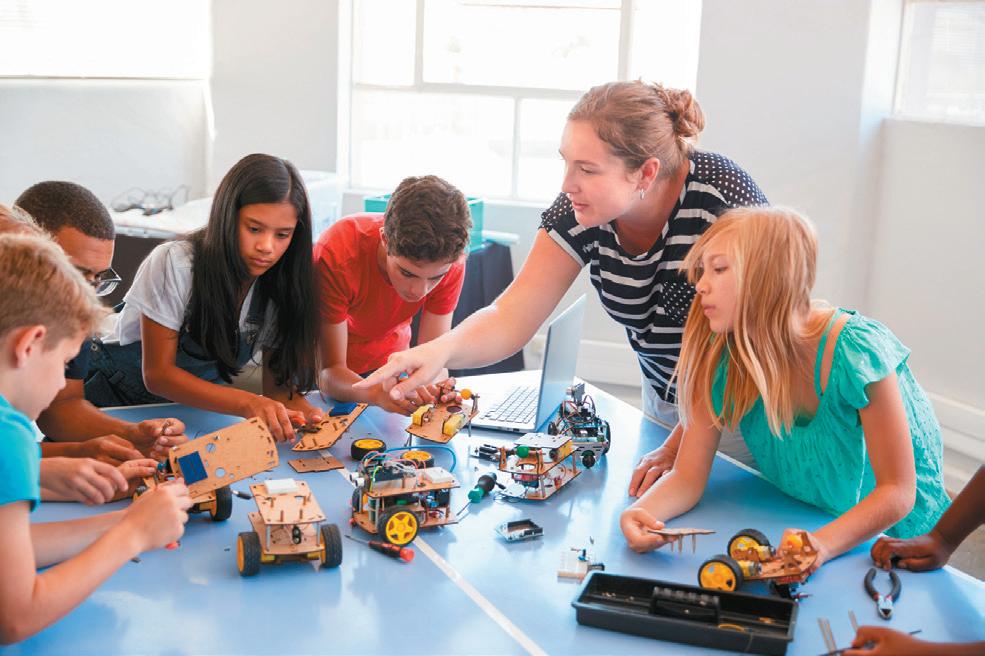


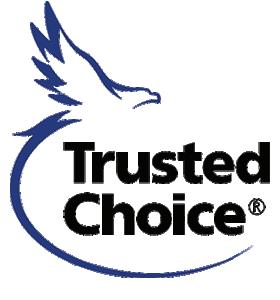










In our extended family, grandson Lucas, age 7, is somewhat apprehensive about the start of school. His sister Sofia, age 4, cannot wait.
“There’s my preschool!” she shouts every time we drive by. “I’m going to make so many friends!”
“Sofia, hush,” Lucas admonishes her, worried others might hear her ear-splitting peals of excitement.
The difference in the two made me wonder how a teacher deals with an entire roomful of different personalities.
Once they delineate between the eager and anxious, there’s all that “background” information that’s so crucial to how students perform in class. Are they equipped with a good night’s sleep and a hearty breakfast? Do they come from a stable household? Will their families be supportive?
Getting off on the right foot can make a difference to how the school year proceeds. The best way — for both students and teachers — is to begin with a level of mutual respect. For students, that begins with their parents modeling the behavior they would want their children to present to others. Teachers deserve to be treated with respect.
And for teachers, it’s necessary they respect where a student’s coming from and their, perhaps, associated challenges.
To their credit, public schools set high standards, including the mandate to help all students learn skills that equip them to live productive lives.
Iola High’s Doug Kerr exemplifies this in his Career and
Technical Education classes that have been expanded to include special education students.

Susan Lynn, Register Editor
“I cast a broad stroke to what success looks like,” Kerr says in the article by Vickie Moss. “To find what success looks like for individual students is a challenge. We understood everyone had different goals and we had high expectations for reaching those goals even though they may not always be the same.”
Kerr’s first objective? To reach students. To connect. To show them the thrill of learning, no matter their abilities. Because for students and teacher alike, it doesn’t get any better than when that proverbial “light-bulb” moment at learning a new concept clicks for a student.
Teachers live for that.
From reading this issue, I think you’ll find that our local schools are doing everything they can to provide every student a rewarding education.
Iola and Humboldt will once again provide a free breakfast and lunch for all students.
All districts have on-site medical and mental health professionals.
And all are staffed with professionals trained to prepare our children not only for today’s world, but for what tomorrow may bring.
ADVERTISING:
EDITORS: PUBLISHED BY:
Susan Lynn and Tim Stau er
PHOTOS AND STORIES:
Susan Lynn, Richard Luken, Vickie Moss and Sarah Haney
COVER PHOTO: Vickie Moss
On the cover:
Tim Stau er and Paul Vernon
MARKETING AND DESIGN: Kristi Kranker
Violeta Rodriguez Stau er
GRAPHIC DESIGN:

After a relaxing summer, many parents are dreading the challenge of trying to get their children back into a routine for school. However, establishing a consistent routine can be the cornerstone of a child’s academic success and overall well-being.
Adequate sleep is vital for children’s cognitive function, mood regulation, and overall health. It’s important for a child to go to bed at the same time every night, even on weekends. This helps regulate their internal clock.
“Even during the summer, you don’t want to drastically alter what time they go to bed because it takes a while to build that habit again,” said Cody Haviland, LMSW, an outpatient therapist with the Southeast Kansas Mental Health Center stationed at Humboldt and Chanute schools.
Parents can also develop a calming pre-sleep routine, such as reading a book or taking a warm bath, to signal that it’s time to wind down. Encouraging children to turn off electronic devices
at least an hour before bedtime can prove helpful. The blue light emitted by screens can interfere with the production of melatonin, the sleep hormone.
“Our physical and mental health are so closely related,” said Haviland. “If you have a sleep routine that consists of an adequate number of hours and eat a healthy three meals a day, it’s going to help your child’s physical and mental health.”
Haviland emphasized the importance of well-balanced, nutritious meals. This starts with the “most important meal of the day” — breakfast. A nutritious breakfast provides the energy and nutrients children need to concentrate and perform well in school. To start the day off right, a child should have a breakfast that includes protein and fiber. Foods like eggs, yogurt, wholegrain cereals and fresh fruit can help keep children full and focused.
Staying on top of homework is also vital. Homework
reinforces what children have learned in school earlier in the day and helps develop time management skills. Establishing a dedicated homework routine can help with this process. Create a routine that includes a quiet, well-lit space free from distractions and at a consistent time each day.
Extracurricular activities are always beneficial to a child’s physical development, but it’s crucial to strike a balance. Instead of filling a child’s schedule to the brim with extracurriculars, choose one or two they are particularly passionate about. It’s a good idea to monitor a child’s stress level as they take on these activities to make sure there is enough time for homework, family time, and rest.
Combining all these elements into a daily schedule can help create a sense of order and predictability.
“Throughout the school year, it is beneficial to have a set routine for the next day planned out each night before they go to bed,” said Haviland. “Waking up about the same time each day helps because it creates the routine.”
Haviland also highlights the role of positive reinforcement in maintaining routines. “It depends on the kid, for sure,” he said. “If you can build a reward system that reinforces the positive side of adhering to the routine, that would be very beneficial. Kids often like attention and praise. Find something that is a good motivator to get them to fall into the schedule. As they adhere to it, tell them you’re proud of the results of their schedule. Positive reinforcement is vital for a lot of kids.”
Establishing a school routine that incorporates sleep, breakfast, homework, and extracurricular activities is essential for your child’s success and well-being. By prioritizing and maintaining consistency with these elements, parents can help

their children develop healthy habits that will benefit them throughout the school year and beyond. A balanced routine not only supports academic achievement, but also nurtures a wellrounded and happy child. As Haviland aptly puts it, “When you have consistency, you’re able to feel your best and be your best.”




Platforms like Instagram, TikTok, and Snapchat have become integral to many young people’s lives, making it crucial to understand their impact and guide children toward responsible use.
Social media offers numerous benefits, from fostering connections with peers to providing educational content. However, it also poses significant risks, including cyberbullying, exposure to inappropriate content, and the potential for addiction. The American Academy of Pediatrics reports that excessive use of social media can lead to issues such as anxiety, depression, and sleep disturbances in children and adolescents.
“I see some positives and negatives with social media,” said
Cody Haviland, LMSW, an outpatient therapist with Southeast Kansas Mental Health Center based in Humboldt and Chanute.
“Obvious negatives are we see only the best of what everyone has and we miss that people are human. There are flaws. Not everyone looks like they do on social media because of filters. That makes teenagers who are struggling with identity and selfworth more aware that their life is not like that. It adds to the pressure to fit in and look a certain way that is unachievable.”

Parents can play a pivotal role by teaching children critical thinking skills to evaluate the content they encounter online.
Encouraging open conversations about what they see and experience on social media can help demystify the digital world
and provide children with tools to handle online interactions responsibly.
Creating a healthy balance between online and offline activities is essential. Parents can encourage this balance by establishing clearly set rules of how long they can spend on social media each day. Promoting involvement in extracurricular activities such as sports, arts, and reading can also be beneficial. These activities not only provide a break from screens, but also help develop critical social and physical skills.
When children begin having mental health problems, there may be signs for parents to recognize.
“Major signs that something isn’t right include isolating behavior, loss of interest in activities they used to enjoy, drastic changes in their sleep schedule, and avoiding friends,” Haviland warns.
“I recommend first talking to their kids about if something is going on at school. If their child opens up, parents can reach out to their local school district to see if school counselors or mental health staff can help. We can teach some coping skills, process some things, and hopefully get them back on track and back to their old selves.”
Haviland also advises parents to be aware of what social media and online forums their kids are accessing.
“There are dark sides to the internet and video gaming, like Roblox. Keep the dialogue with your kids open and honest about what is acceptable and what to watch out for, including adults trying to add them on social media. Warn your children to not send inappropriate pictures, and if someone sends some to them, make sure your children know to alert you.”
Talking with your kids and finding out how and where the bullying is occurring is crucial, according to Haviland. “See if
law enforcement needs to be contacted, or if a change in social media platforms is necessary,” he said. “Block and report the bullying behavior on those platforms.”
SOCIAL MEDIA isn’t all bad, though. “Positives include reaching those who are isolated during the summer,” noted Haviland. “Connecting to their friends by sending each other Snapchats or funny memes on Facebook Messenger keeps a healthy engagement with their peers instead of sinking into a depressive state.”

Children often emulate the behavior of their parents, making it essential for parents to model responsible social media use. Demonstrating a balanced approach to technology, such as not checking phones during family meals, can set a positive example.
By encouraging open communication, parents can help their children navigate the complex world of social media, ensuring their mental well-being and a positive school experience.









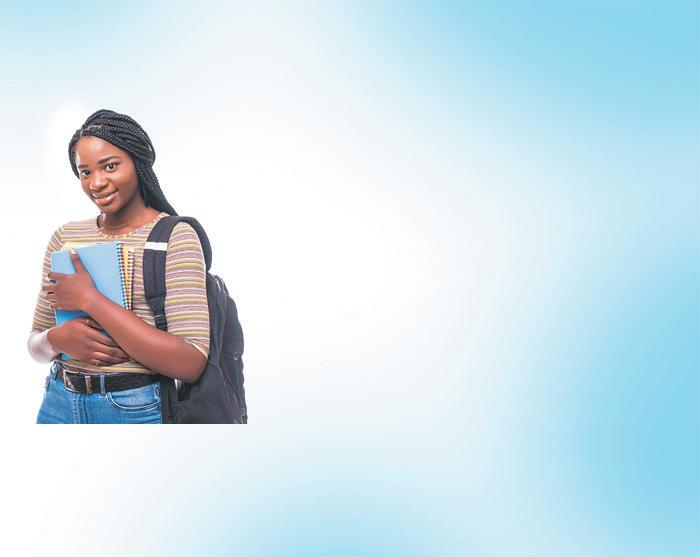




Most students at Iola schools can avoid paying all but a small amount of fees at enrollment. The so-called “enrollment fee” consists of a technology fee — which can be substantially reduced.
Iola middle and high schools charge a $40 technology fee to each student, but if the family fills out a Household Economic Survey and Consent for Disclosure, they’ll pay half that rate, or $20.
At Iola Elementary School, students in kindergarten through fifth grade are charged a $20 technology fee but the entirety of that fee is waived if the family fills out the economic survey.
Preschool students are charged a $15 fee.
Meals are free for all students in USD 257, regardless of the family’s ability to pay. If students want an additional breakfast entree, they’ll be charged $2.75. An additional lunch entree is $3.25.
• Extra milk costs 55 cents.
• For adults, breakfast costs $3.20 and lunch is $5.10.
A note about why it’s important for families to fill out the economic survey: The district uses that survey to qualify for the Community Eligibility Provision, a USDA program that reimburses the district for its free meals. The USDA has specific criteria, such as determining how many students are considered “at-risk” because of conditions such as low income or how many families receive food stamps. Districts receive funding from the state based on how many “at-risk” students attend.
The responses to the economic survey are kept confidential.
Humboldt also participates in the Community
Provision, which means no students are charged for school meals. The district started offering free meals in the second half of last year’s school calendar. It proved so popular, the school board decided to continue the program.
Humboldt students from kindergarten through 12th grade are charged a $25 textbook fee. Families can have half the fee waived if they fill out an economic survey and if their income would have qualified for free or reduced-price meals. Like the Iola district, the survey is used to qualify for the free meal program. Surveys can be filled out at enrollment Aug. 6 at the Fieldhouse, or families can pick up a survey before that at the board office, 801 New York St. Surveys also are available at each attendance center after enrollment.
Students in grades 4 through 12 will be charged a $25 technology fee to assist with the repair and maintenance of computers. Students will receive their laptop and all appropriate training on the first day of classes. A payment plan can be set up if a student is unable to pay the full fee upfront.
The district does not charge an enrollment or technology fee for kindergarten through 12th grade.
Preschool students will be charged $83 for the 3-year-old program and $120 for the 4-year-old program.
Meal costs are:
• Breakfast: $2.54 for younger students and $2.55 for grades 6-12
• Lunch: $3.30 for younger students and $3.50 for grades 6-12
• Adults: $3.95 for breakfast and $5.10 for lunch.
• Extra milk is 50 cents.

It wasn’t hard for Stacie Smail to find a reason to join Iola Elementary School’s Parent Teacher Organization.
It offered a chance to get to know other parents and daughter Addison’s teachers and school administrators.
It also gave an insight into what makes a school tick, what educators may need in and out of the classroom to better educate a roomful of eager young learners.
But mostly, PTO is an opportunity to give back to the community in ways big and small, she said.
Smail is in her third year with PTO, having signed on when her daughter first entered kindergarten. It didn’t take her long to get fully involved.
Smail signed on as a co-secretary her first year with PTO. By year 2, she was co-president.
Now, entering year three, Smail is in line to remain president in 2024-25, although nothing official is expected until after


the school year starts.
THE PTO meets the third Monday of each month, with the first meeting or two earmarked toward brainstorming, Smail explained.
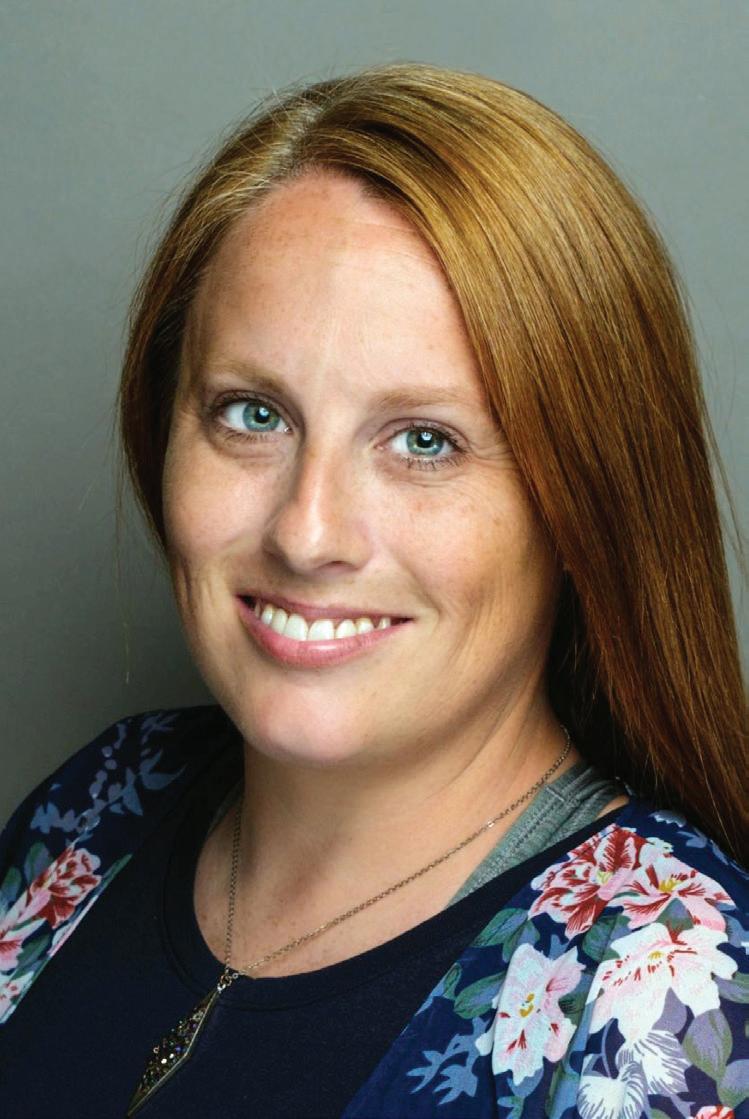
“We’ll meet with the principal and vice principal, to see if there are any sort of big-ticket items for the school that are needed,” she said, items that are beyond the district’s budget.
“Then, we’ll figure out how to make it happen.”
Last year, for example, PTO helped bring a pair of large storage sheds, one to hold such things as tricycles and other equipment for PE classes, items too big and cumbersome to be stored inside the school. The second shed is used by the PTO itself, to hold equipment the group needs for various fundraisers.
The group also helped fund smaller items, like magnetic marker boards for first-grade classrooms.
Sometimes, the projects extend beyond a single year, such as the ongoing effort to help fund refurbished soccer goals for PE

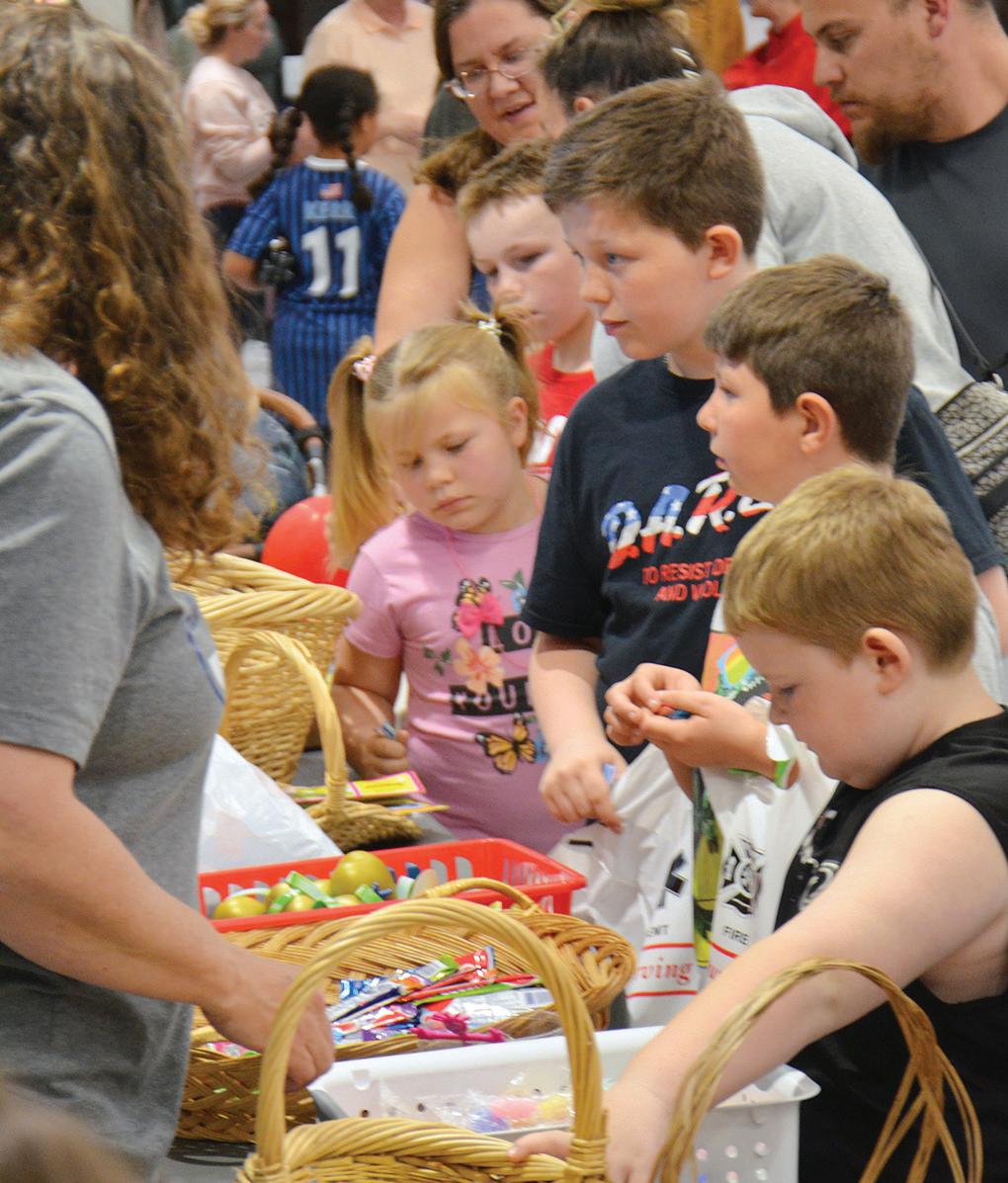
A bulk of the PTO’s revenue comes from the school’s annual carnival, which is discussed to some extent at pretty much every meeting of the year.
The carnival is typically one of the largest single events hosted by the school, and for the past few years, has been held in the spring.
But PTO involves more that hosting a school carnival — merchandise sales, for example — and is much more than a fundraising group, Smail quickly added.
“We’ll send out gratitude notes to students or staff,” she said. “It comes as a little treat.”
The organization is filled with parents and teachers eager to make things a little better at Iola Elementary School.
As an aside, the PTO serves the elementary school while Iola High School has its Boosters Club to host various projects.
Now, an effort is being extended this fall to establish a PTO

group for Iola Middle School.
“We’re trying to fill that gap,” she said.
SMAIL is grateful she answered a call on Facebook when her daughter first started school, notifying her the PTO was looking for new members.
“I knew I wanted to check it out,” she said. “I’m always looking for ways to give back, and I figured it would be something I enjoyed. And I do enjoy it.”
“I’ve enjoyed getting to know other parents as well as staff,” she continued. “I’ve really gotten to hear from a lot of them about what they need, what works for them and what doesn’t.”
Smail plans to remain engaged in her children’s educations for years to come. (She also has a son entering preschool this year.)
“It’s a way to get to know what’s going on in our school, what our kids are learning,” she said. “I’m sure I’ll always volunteer in some shape or form. I enjoy being involved. I love the students and want them to have the best experience they can.”






A new state law will allow any student to attend a school outside their home district, provided the school has room in its enrollment.
Each district was required to outline its rules and procedures, and to post on its website how many spots are available for outof-district students. If a family wants to enroll outside its district, they should check with the preferred school to determine what steps need to be taken.
Iola administrators reported the district has plenty of room for out-of-district students but they don’t expect many to apply. Students must remain “in good standing,” such as meeting academic and attendance standards. School administrators will work with out-of-district students to keep them in good standing, but if a student is not successful they would be notified in May if they are not allowed back the following semester.
Humboldt schools will have limited capacity to accept out-ofdistrict students.
Applications were due June 30. If enrollment in August is below the expected projection or combined enrollment is high enough to add additional teachers, additional slots may be available. Individual courses at HHS are limited in enrollment. If individual class capacity is reached at any time, a student may need to choose alternative courses.
At Marmaton Valley, families that live outside the district need to fill out an application that can be found on the district’s
website.
Students will not need to fill out this form if they attended Marmaton Valley at the end of the 2023-24 school year or enrolled in May.
To qualify for enrollment, out-of-district students must remain in good standing. That means maintaining a 94% attendance rate; cannot be under expulsion from another school; cannot have more than five out-of-school suspensions or a longterm suspension, and must make progress toward graduation or IEP goals.
If too many out-of-district students enroll, the school will conduct a lottery to determine who will be able to attend.
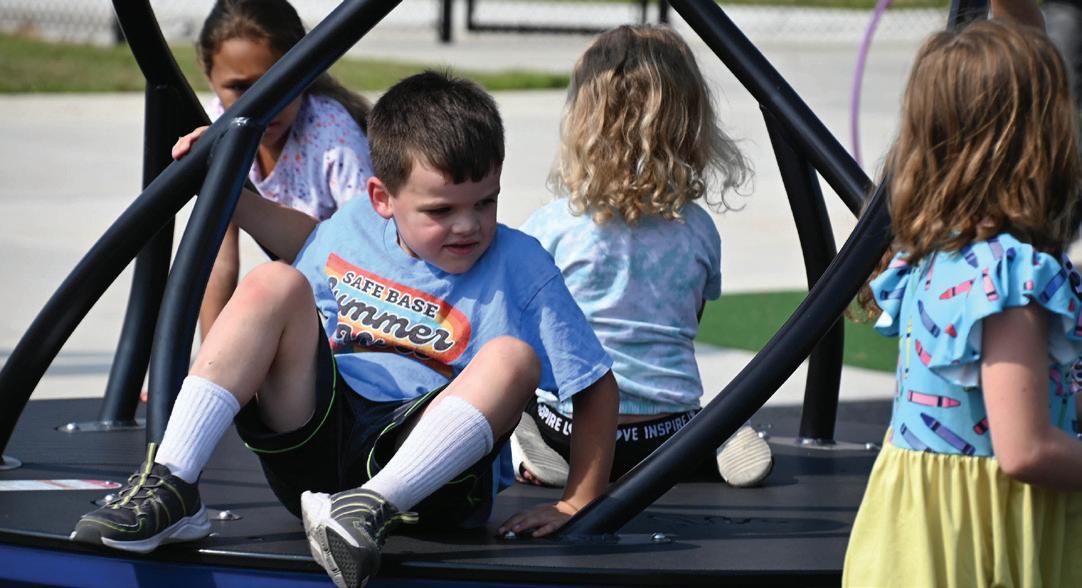

The school year is a good reminder for parents to keep up to date with their kids’ immunizations that not only protect them, but also the entire community.
Immunizations aren’t just about protecting yourself and your child, reminds Tiffany Davidson, public health nurse at the Iola office of the Southeast Kansas Multi-County Health Departments.
“It’s not about each individual person, it’s about all of us as a whole. Children’s immune systems are not quite built yet to fight diseases and we need herd immunity to protect everyone,” she said.
As children head back to school, it’s important to make sure their immunizations are up to date.
Area schools typically work hand-in-hand with the health department and other health care providers to remind parents
“What we learn with pleasure we never forget.”
when immunizations are due. Often, those reminders come both at the end of the school year and at enrollment or the start of a new year.
“Parents often need reminders,” Davidson said.
Those who have questions are encouraged to contact the health department to see what shots their child may need to attend school, as well as other immunizations that are recommended. Each school district has different rules about immunization exemptions, such as for medical or religious reasons.
Health department staff can use a statewide computer system to research immunization history for children who are new to

— Alfred Mercier


a district but previously received immunizations elsewhere in Kansas. Students who transfer from out-of-state will need to provide records.
Davidson said she has noticed a decrease in children seeking immunizations at the Iola health department in recent years. Part of that is attributed to an increase in other providers who now offer immunizations. For example, the Southeast Kansas Mental Health Center now provides immunizations at its Ashley Clinic in Iola. The Community Health Center of Southeast Kansas also offers immunizations, as do other providers in the county.
But some families also are more reluctant to immunize after the COVID-19 pandemic, Davidson said.
“We’re seeing a lot of skepticism around vaccines after COVID. Some people have lost trust in the public healthcare system and that’s a big concern,” she said. Winning back that trust takes time, she acknowledged.
“We’ll keep educating, going to events in the community and doing outreach to provide information,” Davidson said.
“A lot of it is just gaining a rapport with parents and letting
them know you care about them and their children. If they are willing, we’d love for them to come in and have a conversation. We can talk about the risks and benefits, some things they’ve heard and the facts. If they’re willing to have that conversation, it usually goes pretty well.”
As immunization rates drop, childhood diseases that were nearly eradicated have increased. Davidson hasn’t seen outbreaks in Allen County, but other area counties have reported incidents of vaccine-preventable dieases such as pertussis, commonly known as whooping cough.
Davidson also wants to see an increase in immunzation rates for such things as meningococcal (meningitis) and human papillomavirus (HPV). Those vaccines aren’t required for school attendance but are important. HPV is the most common sexually transmitted disease and affects both males and females.
“A lot of boys’ parents don’t understand the importance of the HPV vaccine. They don’t think about other cancers boys can get, like throat cancer,” she said.
FAMILIES WITH children who need immuniza ons can walk into the health depar ent at 411 N. Washington Ave. be een 7 a.m. and noon, and 12:30 and 5:30 p.m. Monday through Thursday, or call 620-365-2191 to schedule an appoin ent or to learn more.
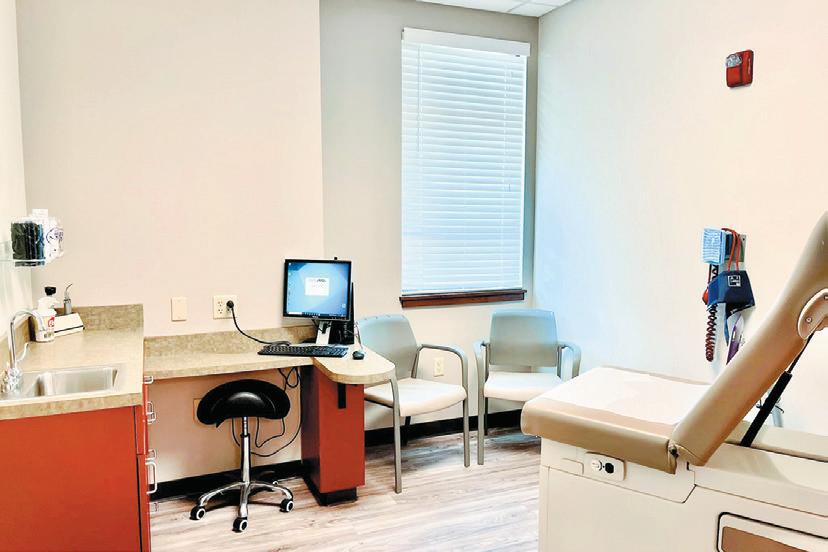




















Iola and Humboldt schools will continue to offer free meals in the next school year.
The Iola district began offering free meals to all children, regardless of a family’s income, at the start of the 2023-24 school year thanks to an expanded federal program initiated during the COVID-19 pandemic. The district found more students took advantage of the free meals and the board agreed to continue the program this year.
Before the free meal program, 37% of students ate breakfast and 52% had lunch, according to Staci Talkington, food service director. By the end of the school year, 41% of students were eating breakfast and 59% lunch.
Talkington noted it has taken time to educate students and families about the free meals. She cited an example of a student whose family couldn’t afford the cost of meals. It took months for staff to convince the student that it was OK to eat the meals at school, and that their family would not be charged.
The free meal program hasn’t cost the district any additional money, Talkington said. As long as the district meets certain criteria, the program is paid for by the Community Eligibility Provision, a federal program through the USDA.
The Humboldt school board agreed to try the program in January, and were pleased with the results. The board voted to continue the program during this entire school year.
The Humboldt district does incur some costs, Superintendent Amber Wheeler said. It’s difficult to estimate how much the program costs because expenses fluctuate and the district has
not yet offered the program for an entire year, but Wheeler gave a rough estimate of about $30,000. “It’s a very fluid number,” she said.
The Moran district doesn’t meet all the criteria to qualify for the federal program, Superintendent Kim Ensminger told the Register previously.
In 2023, the USDA expanded eligibility for the program to about 3,000 more school districts, including Humboldt, serving more than 5 million children.
Instead of requiring families to complete individual applications for free or reduced-price meals, schools participating in the program receive federal funding based on income data, with local or state money filling in any gaps in the cost of offering meals to all students.
During the pandemic, Congress temporarily made universal meals free to all students, but that ended in 2022. Other federal programs that provided direct food assistance to families also were scaled down, putting strains on family budgets and leaving some kids hungry.
Eight states — California, Colorado, Maine, Massachusetts, Michigan, Minnesota, New Mexico and Vermont — have made school meals free to all students regardless of income.
THE FREE meals program applies only to students. Faculty, staff or visitors such as parents, grandparents and guardians will continue to pay for breakfast and lunch.

This year marks the 100th anniversary of IMS. Administrators plan to commemorate the historic event with several activities throughout the year.
Principal Brad Crusinbery has been working with the Allen County Historical Society and the Iola Register to research the school’s history, and hopes to post photographs and articles to honor the school’s past and embrace its future.
One of the first activities will be to ask all students to help recreate a photo taken at the opening of the school in 1924. At that time, all students gathered outside the front of the new building. The photo still hangs in the office and will be matched by its modern version.
Crusinbery also hopes to find distinguished alumni who might be willing to return and share their stories. An open house

will be scheduled at some point, inviting all former, present and future students to see the building. Old yearbooks and photos will be available to peruse.
Students also will celebrate with a cookout at some point.
THE SCHOOL has changed quite a bit since it opened. Most recently, the building was updated with new windows and a new HVAC system.
In the early 1990s, a school bond issue added new offices and a gymnasium.
Crusinbery arrived in 2001, so he wasn’t around to see the old


gym in action. However, the ghost of gym classes past can still be seen below the first floor, where the previous gym was located.
“It had a concrete floor and you can still see the lines. It’s kind of turned into a dingy dungeon,” he said.
Of course, that’s not how it was described in 1924.
A Register article from Nov. 19, 1924, describes “A Spacious Gym” 45 feet wide and 75 feet long, with a large auditorium with seating for 700 above it.
The article describes the three-story school as “A Building of Beauty” with its twin towers made of Carthage stone on each side of the door, “which give a medieval air.
“The first impression upon entering — and one which remains and grows as the visitor nears the end of his tour — is one of roominess, good light and ventilation and a cleanliness which bespeaks perfect sanitation.”

Crusinbery was amused to discover articles throughout the past 100 years that complained about a lack of parking — a problem that continues to plague the landlocked school.
“That hasn’t really changed,” he said. However, by next summer the district hopes to address a parking issue on the east side of the building. The plan calls to rebuild a retaining wall to give more space for vehicles to park without extending into the
Crusinbery appreciates the thoughtfulness that went into the design of the school 100 years ago. His research has found few school buildings still operating at that age.
The school was constructed at a cost of $165,000, which is the equivalent of about $3 million today.
“It was money well spent,” he said.

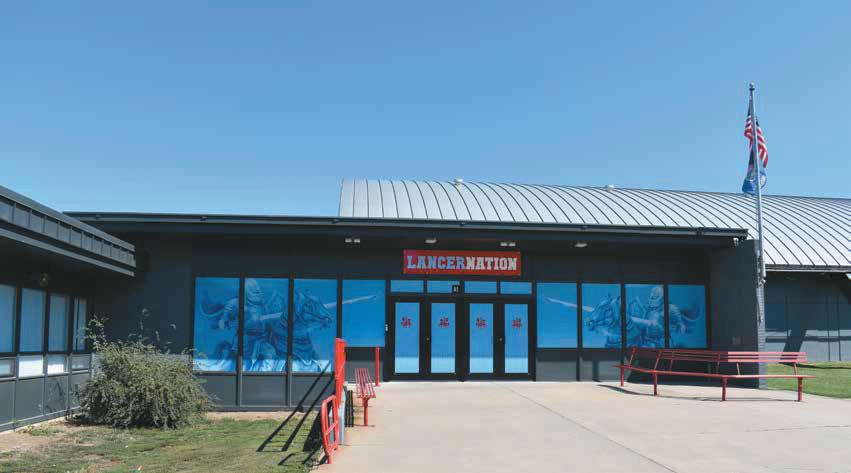
Jake T. Knight, Esq.


A hydroponic growing container offers the Iola High School community a chance to join together several classes.
Community Green Farms of Pittsburg is donating a hydroponic farm/classroom to a high school in every Kansas county, thanks to a state grant. For Allen County, Iola High was selected to receive the farm. Delivery is expected the week of Aug. 12.
The hydroponic container can grow up to 500 heads of lettuce each week, all year long, as well as other leafy green vegetables if desired.
The school continues to develop its plans for the container, but numerous departments are expected to work together.
For example, the agriculture classes are expected to take the lead, with the Family and Consumer Sciences classes likely to incorporate the vegetables into their work as well. A new Career and Technical Education program through the ANW Special Education Interlocal is also expected to take part.
“By teaching kids to grow their own food, we are growing kids,” said Matt O’Malley, executive director for Community Green Farms. He said some districts with the hydroponic containers harvest romaine lettuce and other vegetables for the school cafeteria, where it is offered to students on the salad bar. Some schools sell the lettuce to restaurants or at local farmers markets, teaching business skills to students. Some use the produce for their culinary arts classes. Other schools send vegetables home with students.
O’Malley encourages students to experiment with different types of vegetables. Any leafy, green vegetable can be grown in the container.
“I’m excited for students to try new things. Some kids may not do well in a traditional classroom setting but they come into one of these and thrive. You’ll be surprised which kids step up as leaders,” O’Malley said.
Community Green Farms will supply everything Iola High needs to get started and will provide a year of supplies and technical support. After that, O’Malley estimates it takes about $800 per month to keep the container running at capacity.
Schools can offset costs by selling produce, or reducing production. The units also help a district save money by providing the produce for school meals.








INSIDE THE container, you’ll see a stainless steel table. On the wall above it are tanks filled with liquid nutrients — such as nitrogen and potassium — and a control panel that monitors the environment.
An automatic system maintains conditions. To grow leafy green vegetables, the container is kept at 66 degrees with 64% humidity. Community Green Farms can monitor the system remotely, using an app.
Below the table, a series of shelves holds containers for seedlings. The seeds are dropped into coconut fiber pods, where they take root until they are large enough to be transplanted into one of 250 vertical towers. Up to 10 plants fit on each tower.
The back two-thirds of the space is filled with two double rows of hanging towers, separated by a narrow hallway. Strips of LED grow lights hang between the towers. Each tower can be easily taken out for planting and harvesting.
Plants grow in the center of one side of each tower. The coconut pods, containing roots for each plant, are inserted between a wicking material. A mixture of the liquid nutrients and water drips from the top of the container into the wicking material of each tower, then collects into a pipe at the bottom so it can be recycled.
The system uses only about 10 gallons of water each day.

It can be challenging for schools to maintain the system at times when students aren’t in session, such as over winter, spring and summer breaks. Some schools will harvest everything at the start of a break, plant new seeds and transplant them weeks later when they return. Others designate someone to maintain the farm; it takes minimal manpower.
Community Green Farms introduced their system to schools starting about a year ago, so they’re still learning what works best. Most districts opt to grow lettuce for their school cafeterias, sticking to the familiar romaine. But even that presents

company received a state grant to provide similar hydroponic farms at one high school per county throughout Kansas. Iola High School was expected to receive its unit in mid-August.
opportunities. Seems some varieties thrive better than others in the hydroponic world.
Units have been delivered to schools in Pittsburg, Chanute, Columbus and, most recently in Parsons and Uniontown. Schools receiving the units this summer include Iola, Coffeyville, Pleasanton, Garnett and Fredonia.


Doug Kerr hopes the Iola district’s approach to Career and Technical Education for special student populations will become a model for other schools.
In just his second year, Kerr is expanding the new CTE programs to reach younger students and more students, both locally and at other area districts.
Last year, Kerr introduced three classes — culinary arts, woodworking and video production — adapted to meet the needs of students who receive services from the ANW Special Education Interlocal.
Culinary arts, for example, teaches safety in handling food and equipment, along with easy-to-follow recipes.
Video production students create short videos and memes to share on social media.
Woodworking projects take discarded household items for students to refurbish or turn into crafts. They learn how to safely use common power tools.
The classes proved to be a huge success. A student named Jacob, for example, became a classroom leader in culinary arts
Family owned and operated since 1934
last year. The previous school year, as a sophomore, he missed dozens of days of school and was declared “chronically absent.”
After finding his passion in the kitchen, Jacob missed only a



couple of days of school as a junior. He’d often arrive early and eager to start the day.
Come this fall, Jacob will be a senior and a mentor for the revised culinary arts program. He’ll teach younger students about cooking essentials.
“Upper management is what I call him,” Kerr said, expressing his pride in students who stepped up to embrace his vision of CTE. Kerr is uniquely qualified to develop the program, since he has certification to teach both CTE and special education.
“I tried to cast a broad stroke in what success looks like. We had a lot of kids who were really uncomfortable in certain situations, who got to a level of comfort. To find what success looks like for individual students was a challenge. We understood everyone had different goals and we had high expectations for reaching those goals even though they may not always be the same. A good majority of the students did a great job.”
NEXT YEAR’S program will extend to 8th grade and add new skills in more industries.
All 8th graders at Iola Middle School, whether they receive special education services or not, will be introduced to CTE pathways. Such pathways help students link their education to a possible career, offering targeted classes and opportunities to explore an area of interest. Related career pathways are grouped into “clusters,” such as health science, marketing, manufacturing, agriculture and finance.
Under the new program, 8th graders will use a “wheel” to briefly explore different types of educational pathways. That will prepare them for the transition to high school, where they will explore a particular pathway in more depth.
Also new at Iola High School, 9th grade students who receive ANW special education services will receive their own introduction to CTE pathways. Those students can then decide if they want to pursue a more traditional CTE class such as welding or automotive technology, or explore Kerr’s modified programs for special populations.
Some students may want to take a traditional CTE class but have a barrier such as anxiety. Kerr’s modified classes teach basic skills that might allow a student to develop confidence and move on to a traditional program. Also, the new classes offer opportunities for students who prefer a slower pace. For example, Breanna Floyd’s introductory culinary arts class offers a one-hour class for one semester before students advance to a higher skill level; Kerr’s class is two hours for an entire year.
“There might be a waiting list for some of Mrs. Floyd’s classes, so this gives an opportunity for every student to get involved,” Kerr said.
KERR’S CTE program is adding more classes this year, too.

The popular culinary arts program will be expanded to a twohour block. Kerr said the biggest lesson he learned last year was time-management; it’s difficult to teach cooking skills along with preparation and cleanup in just one hour. He also wants students to gain more experience in catering. Last year, students catered meals for ANW faculty and staff.
“This allows us to do more restaurant management and prepare kids for in-the-field work,” Kerr said.
The industrial management class, aka “woodworking,” will add new technology such as a CNC router and 3-D printer. In the spring, students will learn about small engine repair. Kerr hopes


that might encourage some students to explore the automotive technology class at the Regional Rural Technology Center in LaHarpe. He also plans to offer “a mass production project.” Last year, students built wooden planter boxes for a donation. Their goal was to sell 40 but they far exceeded that by selling 76.
“They got first-hand knowledge of the manufacturing process: how to use time management, how to work as a team, the importance of attendance and understanding how others depend on you. Those are all important life skills,” Kerr said.
The video production class won’t see much change. A similar class is offered by Regina Chriestenson so Kerr’s class expands opportunities for students in special populations.
Kerr also plans to partner with agriculture teacher Amanda Strickler-Holman for a new hydroponic farming program. The
district was selected by Community Green Farms of Pittsburg to receive a hydroponic growing container, expected to be delivered by the time school starts. Strickler-Holman, Kerr and other educators are developing a program for students to use the container.
KERR’S CTE classes aren’t just for Iola students.
Like other CTE programs, students from any school in the ANW Interlocal can attend. It’s not unusual for a district to transport students from one school to another to attend classes that best fit their needs and interests. Kerr said he hopes other area districts will consider sending students to his classes, if space is available. Spots are filling fast.
Kerr received a grant from the state to expand this year’s program. He believes the state is focused on improving CTE opportunities for all students and praised administrators at both the Iola district and ANW for their support of his vision.
“For small schools in Southeast Kansas, Iola has always been a leader,” he said, crediting Superintendent Stacey Fager and IHS CTE Director Dana Daugharthy, Melissa Stiffler with ANW and Lisa Wicoff at Allen Community College for their leadership in CTE.
“As far as our program, there really isn’t another district doing anything like this,” Kerr said. “This opens a lot of doors and I’m really excited.”


Instilling a love for learning in children is a gift that lasts a lifetime. Parents can empower their children to embrace education by nurturing their curiosity and enthusiasm. Here are four ways to encourage a love for learning in your child:
1. Foster curiosity. Encourage your child to ask questions and explore their interests. Provide opportunities for hands-on learning experiences and expose them to various subjects and activities.
2. Lead by example. Demonstrate your love for learning by sharing your interests, hobbies and experiences with your child. Let them see you reading books and pursuing new skills.
3. Create a positive learning environment. Establish a supportive and stimulating study space and provide access to educational resources like books, games and educational materials.

are our future!
4. Embrace mistakes. Teach your child that mistakes are a natural part of learning. Emphasize the importance of resilience and perseverance in overcoming challenges.




























Stacey Fager
usd257.org
Superintendent of Schools....620-365-4700
Scott Carson Iola High School Principal.....620-365-4715
Brad Crusinbery
Iola Middle School Principal..620-365-4785
Andy Gottlob Iola Elementary Principal.......620-365-4820
Aaron Cole
Building & Grounds...............620-365-4705
Staci Talkington Food Coordinator...................620-365-4711
Bowlus Fine Arts Center
Dan Kays.................................620-365-4765
SAFE BASE
Angela Henry..........................620-365-4780
Middle School Guidance
Staci Crusinbery.....................620-365-4795
High School Guidance Kelsey Johnson......................620-365-4727
USD 257 Board of Education
Jennifer Taylor...................................President
Dan Willis..................................Vice-President
Doug Dunlap........................................Member
Tony Leavitt..........................................Member
Robin Griffin-Lohman.........................Member
John Masterson...................................Member
John Wilson.........................................Member
Teresa Taylor.............................................Clerk
Marcie Boring.....................................Treasurer

usd258.net
marmatonvalley.org
Kim Ensminger........................Superintendent
Kim Ensminger...............Elementary Principal
Brian Campbell...............Jr./Sr. High Principal
Brian Campbell...................Activities Director
Hali Drake.......................Jr./Sr. High Secretary
Cynthia Johnson..........Elementary Secretary
Trista McVey..................Food Service Director
USD 256 Board of Education
Sherry Henry.............................................Clerk
Ken McWhirter..........................Board Member
Kenneth McVey.........................Board Member
Taeler Carr.................................Board Member
Kris Smith..................................Board Member
Jackie Walls..............................Board Member
Ryan Smith................................Board Member
Kent LaRue................................Board Member
District Phone Numbers
Board of Education Office..........620-237-4250
Jr./Sr. High School Office............620-237-4251
Elementary School Office...........620-237-4381
Shane Walter Superintendent of School......620-852-3540
Travis Hermreck High School & Middle School Principal, Athletic Director.....................620-852-3251
Stephanie Edgerton Elementary School Principal.620-852-3529 Nancy Ellington
Mark Wiley Maintenance Director.............620-852-3251
USD 479 Board of Education
Travis Church.....................................President
Nilges...............................Vice
Humboldt High School...................................................................620-473-2251
Humboldt Middle School...............................................................620-473-3348
Humboldt Elementary School.......................................................620-473-2461
Humboldt Preschool......................................................................620-473-3997
Amber Wheeler • Superintendent of Schools..............................620-333-9669
John Johnson • High School Principal.......................................620-473-0441
Ron James • Middle School Principal & Athletic Director..........620-429-3943
Staci Hudlin • PreK & Elementary School Principal....................620-365-0420
Jody Siebenmorgen • Virtual Education.....................................620-228-4186
Drake Tilman
Sandy Whitaker
Andrea Newman
Josh Wrestler




